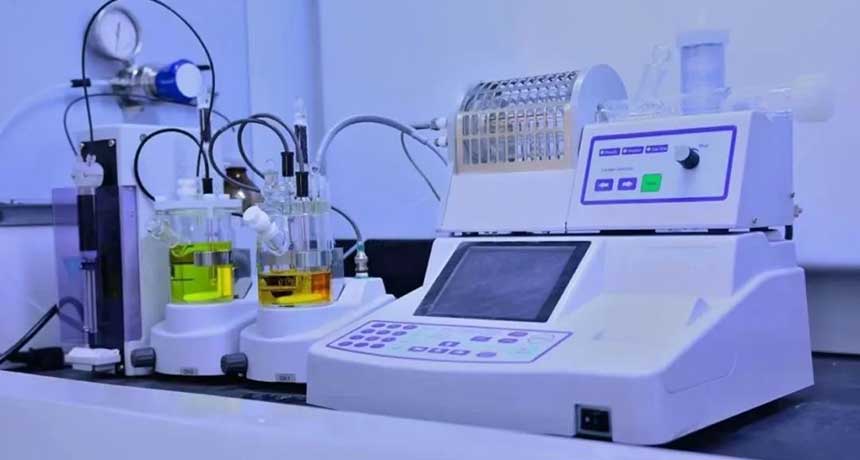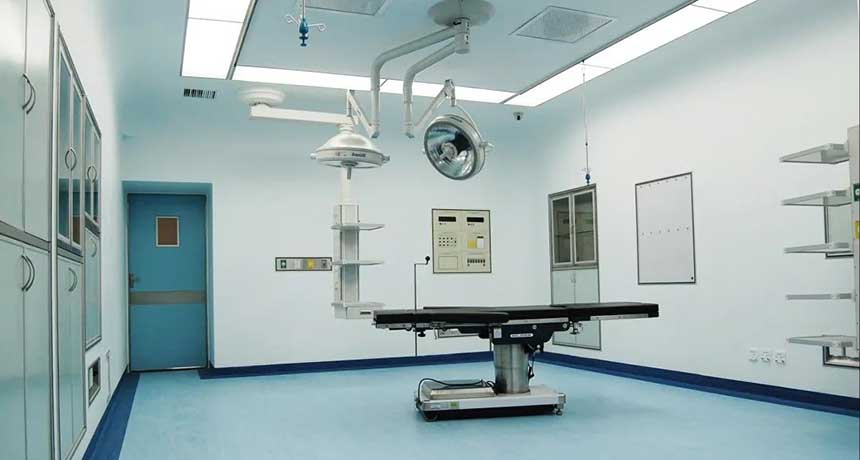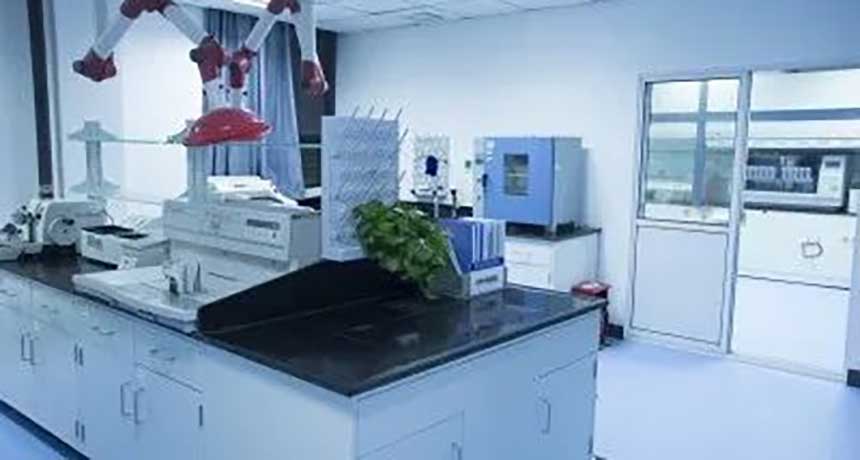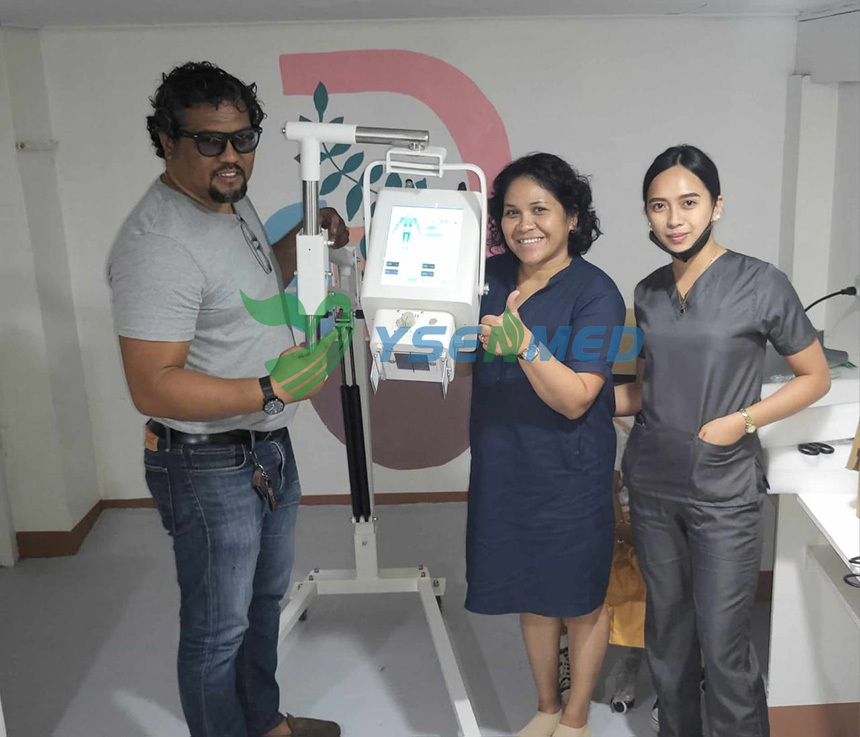Operating laboratory instruments and equipment demands precision and adherence to proper procedures to ensure accurate results and maintain the equipment’s functionality. Here are operational guidelines for commonly used laboratory instruments:
Operating procedures for common laboratory instruments and equipment
Clean workbench operating procedures
1. Depending on the cleanliness of the environment, the coarse filter cloth can be removed, cleaned and replaced regularly (usually 2 to 3 months);
2. Sterilize the ultra-clean workbench environment regularly (usually one week). At the same time, often wipe the outer surface of the ultraviolet germicidal lamp clean with gauze dipped in alcohol or acetone organic solvent to keep the surface clean, otherwise the sterilization effect will be affected;
3. When increasing the fan voltage cannot make the operating wind speed reach 0.32m/s, the high-efficiency air filter must be replaced;
4. When replacing the high-efficiency air filter, you can open the top cover. When replacing, you should pay attention to the arrow mark on the filter. The direction of the arrow is the direction of the laminar airflow;
5. After replacing the high-efficiency air filter, use a dust particle counter to check whether the surrounding frame seal is good, adjust the fan voltage to keep the average operating wind speed within the range of 0.32~0.48m/s, and then use a Y09-4 dust particle counter to check the cleanliness Spend.
Operating procedures:
1. When using the workbench, you should turn on the machine one hour in advance and turn on the ultraviolet sterilization lamp at the same time to treat the microorganisms accumulated on the surface in the operating area. Turn off the sterilization lamp after thirty minutes;
2. Before using a newly installed workbench or a workbench that has not been used for a long time, the workbench and surrounding environment must be cleaned with an ultra-clean vacuum cleaner or a tool that does not produce fibers, and then use drug sterilization and ultraviolet sterilization. method for sterilization;
3. Unnecessary items are not allowed to be stored in the operating area to keep the clean airflow pattern in the operating area uninterrupted;
4. In the operating area, actions that significantly disrupt the air flow pattern should be avoided as much as possible;
5. The operating temperature in the operating area shall not exceed 60°C.
Electronic balance operating procedures
Operating procedures:
1. Place the electronic balance on a stable, flat surface;
2. Plug in the power and turn on the switch;
3. When starting up, there should be no heavy objects on the scale tray. After the display is stable, place the empty container on the scale pan, but its weight should not exceed the maximum weighing capacity. Press the tare key to return to zero;
4. After adding the required sample, the displayed value is the sample weight;
5. After weighing, set the balance to zero first, then turn off the switch and unplug the power;
6. Clean the balance with a dry cloth or dry brush and put it back in place (avoid contact with water);
7. The balance should always be calibrated with the provided weights;
8. An appropriate amount of desiccant (such as silica gel, etc.) should be placed in the balance.
Operating instructions for portable high-pressure steam sterilizers
operating procedures
1. Stacking:
Wrap the items to be sterilized and place them sequentially on the sieve plate in the sterilization bucket, leaving appropriate gaps between the bags to facilitate air escape and steam penetration.
2. Add water:
The amount of water added to the sterilizer body exceeds the height of the heating ring by 3 to 5cm. The water will gradually evaporate during the disinfection process, and the water level will decrease accordingly. Therefore, if you continue to use it after each disinfection, you should add enough water again to prevent the body of the sterilizer from being used. The bottom will crack without water and be scrapped.
3.Sealing:
Put the sterilization bucket into the body of the sterilizer. At this time, the water should not flow back into the sterilization bucket. Cover the sterilizer cover. Pay attention to inserting the hose into the sterilization bucket slot. The stud fastening slot of the cover should be aligned with the stud slot of the main body. , and then tighten the wing nuts in the corresponding directions evenly in order to make the cover and the body tightly fit.
4. Heating:
Place the sterilizer on a heat source for heating. At the beginning, place the purge valve in a vertical position to release steam. The cold air in the sterilizer will escape through the valve hole as it is heated. When the water is boiled and there is a rush of steam, at this time, the release valve is closed. The pressure inside the sterilizer increases with heating and is indicated on the pressure gauge.
5. Disinfection:
When the pressure in the sterilizer reaches the required range, adjust the heat source appropriately to maintain a constant pressure, and start calculating the sterilization time to maintain the required sterilization time according to different items and packages.
6. Drying:
For dressings, instruments and utensils that need to be dried after sterilization, immediately drain the steam from the sterilizer through the release valve (or safety valve) when the sterilization is completed. When the pointer of the pressure gauge returns to zero, wait a moment. After one minute, turn it on and continue heating for 5 minutes, which will allow the item to dry.
7. Cooling:
If the solution and culture medium are immediately released after sterilization, they will boil violently due to a sudden drop in pressure, resulting in serious accidents such as bottle explosion or solution overflow. Therefore, steam should not be released immediately after sterilization. The heat source should be extinguished first, or Remove from the heat source and allow it to cool naturally. Generally, after 20 to 30 minutes, the pressure in the pot will drop to zero due to cooling. Wait for the pressure gauge to return to zero. After a few minutes, open the steam release valve and open the lid.
Precautions:
1. Always ensure that there is sufficient water in the sterilizer, and pour out the condensed water accumulated under the screen plate of the sterilization barrel after each disinfection;
2. The solution or culture medium to be sterilized should be placed in a heat-resistant or hard glass bottle. Do not fill it too full. Generally, fill it to 1/2 to 3/4 of the volume of the container. Use a cotton stopper and kraft paper thread at the mouth of the bottle. The rope is wrapped well;
3. During use, the operator should always observe the pointer value of the pressure gauge. Once it is found that the pointer of the pressure gauge exceeds 0.165MPa and the safety valve still cannot automatically exhaust, the power supply should be cut off immediately and the relevant personnel of the engineering department should be coordinated to repair the safety valve;
4. If the pressure gauge returns to zero and the barrel still cannot be opened, it may be due to internal vacuum. At this time, the release valve can be opened to allow outside air to enter, eliminate the vacuum, and the lid can be opened;
5. The pressure gauge will cause incorrect readings after being used for a long time. It should be inspected and repaired. After inspection, it should be compared with the standard pressure gauge. If it is still abnormal, it should be replaced with a new one;
6. The sterilizer should be kept clean and dry at ordinary times to extend its service life.
Binocular biological microscope operating procedures
Operating procedures:
1. Power supply, insert the light source plug into the socket and turn on the light source switch;
2. Place the specimen on the moving stage, clamp it with the specimen splint, pull the handle of the auxiliary mirror, and open the aperture diaphragm;
3. Add a drop of cedar oil to the specimen, and rotate the oil lens to the fixed bayonet for observation;
4. Slowly rotate the coarse adjustment handwheel to raise the moving stage. When you are appropriately close to the specimen, observe the field of view with your eyes. On the other hand, use the coarse adjustment handwheel to slowly adjust the focus downward or upward until the object appears in the field of view. After blurring the bacteria image, use the fine-tuning handwheel until the shape of the bacteria is adjusted clearly, and then stop fine-tuning;
5. After the observation is completed, cut off the power and lift the objective lens. First wipe off the cedar oil on the lens with a cleaning paper, then wipe it again with lens cleaning paper dipped in xylene, and finally wipe it with clean lens cleaning paper;
6. Rotate the coarse adjustment handwheel, lower the moving stage to the lowest fixed position, and rotate the lens to the "eight"-shaped fixed bayonet position;
7. Cover it with a plastic cover and gently put it back in the box.
Precautions:
1. Do not drip too much cedar oil on the surface of the specimen, otherwise it will affect the observation effect;
2. When rotating the coarse adjustment handwheel, raising the moving stage or lowering the lens to approach the specimen, you must adjust carefully and observe carefully to avoid damaging the lens and causing losses;
3. When using or storing the microscope, dust, moisture, overcooling, overheating, and acid and alkali vapors must be avoided. The storage box should have silica gel desiccant to prevent moisture;
4. When there is dirt on the lens surface, you can wipe it with clean lens cleaning paper dipped in a small amount of xylene. Do not use alcohol, otherwise, the glue under the lens will be dissolved;
5. The microscope has a precise structure and parts must not be disassembled at will.
Electric heating constant temperature incubator operating procedures
Operating procedures:
1. Before use, open the door, remove the protective cap on the head of the temperature probe, place the test piece, and close the door;
2. Turn on the power and check whether the instrument is powered on, leaking electricity, and whether the temperature controller is normal;
3. When using, adjust the instrument temperature controller to the required temperature, unscrew the air valve on the top of the box, and insert the calibrated thermometer into the air top to check whether the temperature controller of the electric constant temperature incubator is intact. ;
4. Put the items in and be careful not to damage the probes of the thermometer and temperature controller;
5. After use, the instrument should be cleaned;
6. If it will not be used for a long time, please close the air valve on the top of the box and put the protective cap in place.
Centrifuge operating procedures
Operating procedures:
1. Place the instrument on a solid, flat surface to avoid unnecessary trouble during operation;
2. Do not place any objects on the cover door to avoid unevenness and affect the use of the instrument;
3. Before use, the centrifuge tube must be checked frequently for cracks and aging. If any, it should be replaced in time;
4. Balance the items and centrifuge tubes in pairs, put them symmetrically into the centrifuge to avoid damaging the instrument, and close the safety cover;
5. Adjust the centrifugation time, start from a low speed, reach the required speed, and let it stop naturally;
6. Take out the items carefully and do not shake them violently, otherwise they need to be re-centrifuged.
7. After the experiment is completed, set the speed control knob to zero and wipe the rotor and instrument clean to prevent corrosion and damage caused by contamination of the test solution.
Spectrophotometer Operating Instructions
Operating procedures:
1. Connect the spectrophotometer to the power supply and preheat it for twenty minutes;
2. Adjust the temperature knob to the scale showing the temperature in the room at that time;
3. Adjust the "zero" and "full" knobs by opening and closing the cover of the light absorption chamber;
4. Repeat the adjustment until the two knobs are no longer moved;
5. Add the standard solution/sample solution to the cuvette that has been washed with the corresponding standard solution/sample solution and absorb the liquid outside the cuvette with absorbent paper. Especially the smooth surface needs to be wiped clean with absorbent paper. ;
6. Place the cuvette into the light-absorbing chamber, cover it, and take a reading;
7. After reading, wipe the instrument clean and clean the cuvette with distilled water.
pH meter operating procedures
Operating procedures:
1. Connect the spectrophotometer to the power supply and preheat it for twenty minutes;
2. Adjust the temperature knob to the scale showing the temperature in the room at that time;
3. Adjust the "zero" and "full" knobs by opening and closing the cover of the light absorption chamber;
4. Repeat the adjustment until the two knobs are no longer moved;
5. Add the standard solution/sample solution to the cuvette that has been washed with the corresponding standard solution/sample solution and absorb the liquid outside the cuvette with absorbent paper. Especially the smooth surface needs to be wiped clean with absorbent paper. ;
6. Place the cuvette into the light-absorbing chamber, cover it, and take a reading;
7. After reading, wipe the instrument clean and clean the cuvette with distilled water.
pH meter operating procedures
Operating procedures:
1. Plug the power cord into the power socket, press the power switch, and preheat for 30 minutes;
2. Adjust the selector switch knob to the pH level, and adjust the temperature compensation knob so that the knob indicator line is aligned with the solution temperature value;
3. Remove the short-circuit socket at the measuring electrode socket;
4. Clean the electrode with distilled water and blot it dry with filter paper after cleaning;
5. Plug the composite electrode into the measuring electrode socket;
6. Calibration: Generally speaking, when the instrument is used continuously, it needs to be calibrated once a day;
7. Measurement: Insert the electrode into the sample solution and wait until the numbers on the display stop beating;
8. Reading;
9. After the measurement is completed, turn off the power.
Enzyme-linked immunoassay instrument operating procedures
Operating procedures:
1. After the machine is turned on and self-tested, follow the prompts and enter the password (the original password is 000000) and press the enter key to enter the machine's operation interface;
2. Press Program Settings in the edit menu to edit a new test program;
3. Threshold setting;
4. Report type settings;
5. Standard product setting;
6. Setting of test mode;
7. Setting of test name;
8. Time setting: In this interface, you can set the year, month, day and specific time: hours, minutes, seconds, etc.
Precision and meticulousness are crucial in operating laboratory instruments. Following proper procedures not only ensures accurate results but also prolongs the lifespan of the equipment. Regular maintenance, calibration, and adherence to operating guidelines are fundamental to achieving reliable and consistent outcomes in laboratory analyses.






